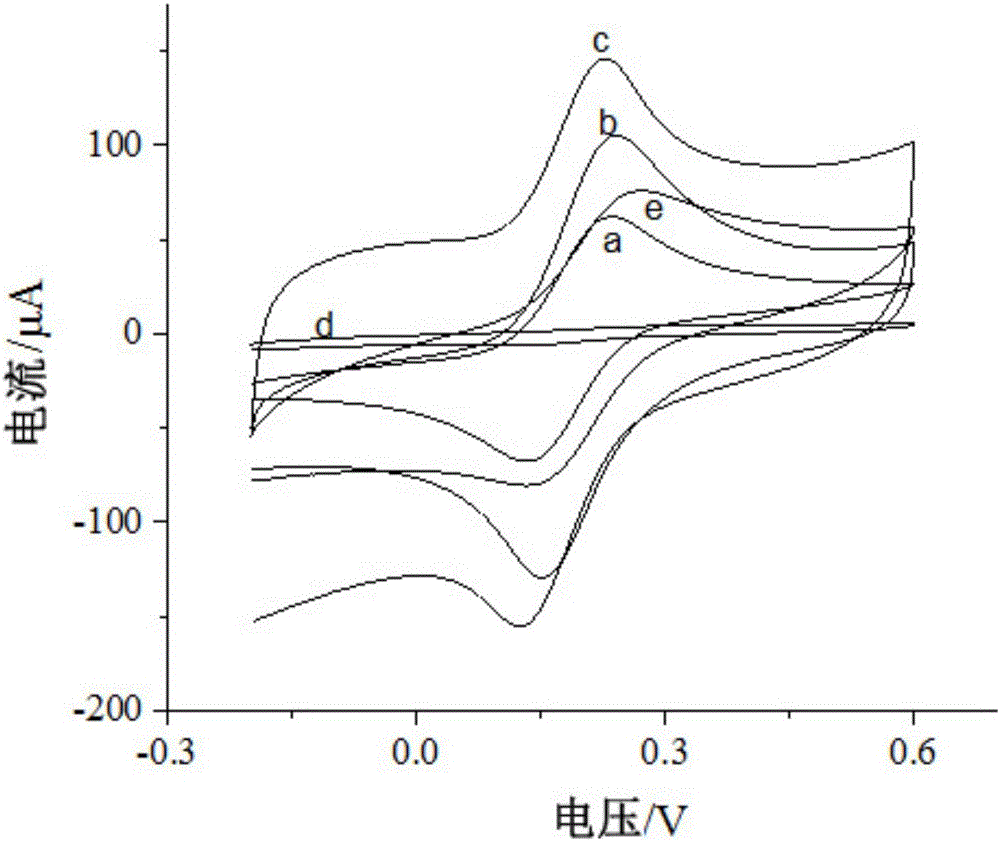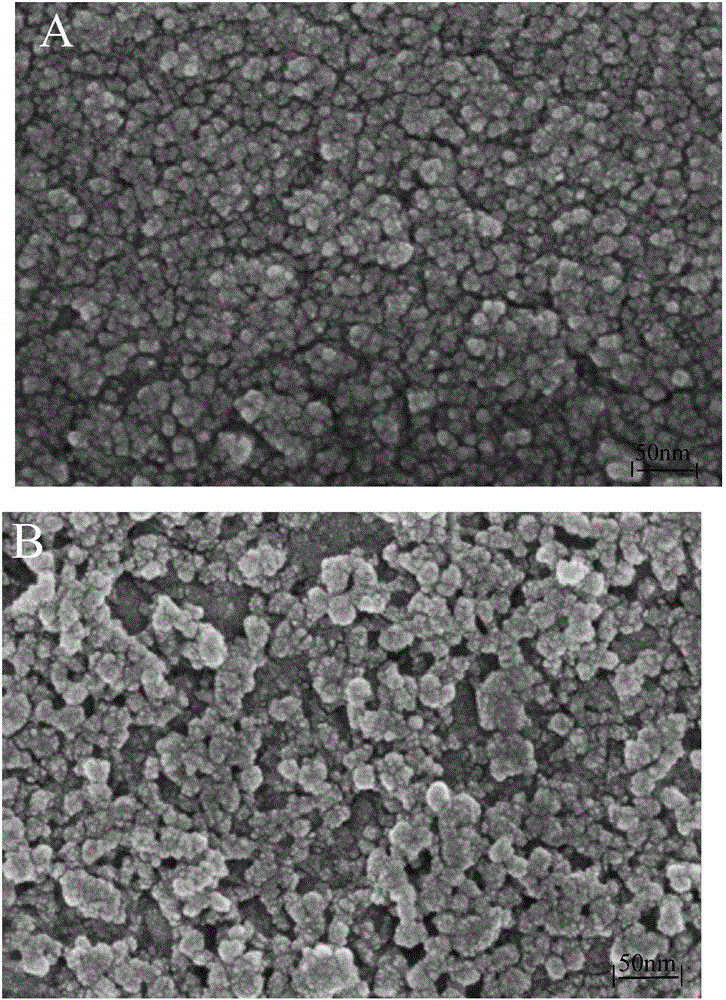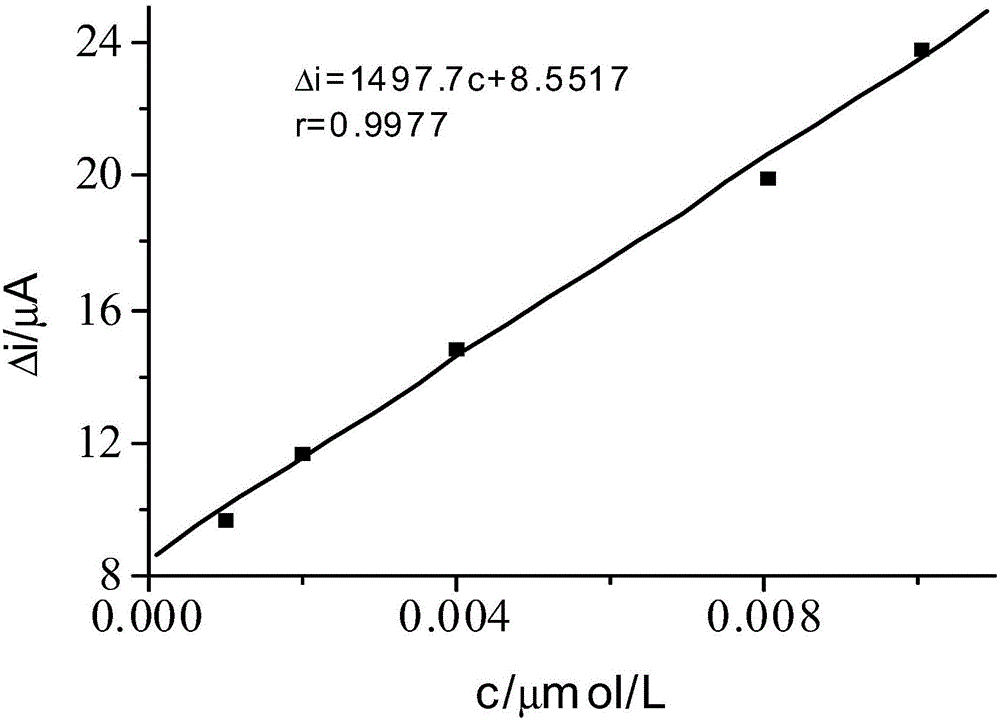Molecular imprinting electrochemical sensor for detecting trace bisphenol A
A molecular imprinting and electrochemical technology, which is applied in the fields of material electrochemical variables, measuring devices, scientific instruments, etc., to achieve the effect of improving sensitivity and selectivity
- Summary
- Abstract
- Description
- Claims
- Application Information
AI Technical Summary
Problems solved by technology
Method used
Image
Examples
Embodiment 1
[0020] Example 1: Construction of a molecularly imprinted electrochemical sensor for detecting trace amounts of BPA according to the present invention
[0021] (1) Treatment of glassy carbon electrodes:
[0022] Polish the glassy carbon electrode on the suede with 0.05 μm alumina polishing powder, then wash it with 2.0M sulfuric acid, distilled water, and absolute ethanol in sequence, and then stabilize it by cyclic voltammetry scanning in 5.0mM potassium ferricyanide solution, take out Rinse with distilled water and let dry for later use.
[0023] (2) Preparation of rGO@Pd modified electrode:
[0024] Weigh 5.0mg rGO@Pd, disperse it in 2.0mL N,N-dimethylformamide solution, ultrasonically disperse it for 15min, take 4.0μL drop-coated on the surface of the glassy carbon electrode, and dry it under the infrared lamp for use.
[0025] (3) Preparation of BPA molecularly imprinted electrode:
[0026] A certain amount of BPA and pyrrole were respectively dissolved in acetonitrile...
Embodiment 2
[0027] Example 2: Cyclic voltammetry characterization of the molecularly imprinted electrochemical sensor for detecting trace amounts of BPA according to the present invention
[0028] Since the imprinted holes in the membrane can serve as channels for electron transfer, using K 3 Fe(CN) 6 As a probe, characterize the surface properties of various electrodes according to the magnitude of their current. Such as figure 1 As shown, different electrodes at K 3 Fe(CN) 6 The cyclic voltammograms in solution differ significantly.
[0029] Curve a is the cyclic voltammogram of the bare gold electrode. When the reduced graphene oxide is modified on the electrode surface, the redox peak current of potassium ferricyanide increases (curve b). When palladium is further doped, the redox peak current of potassium ferricyanide further increases due to the signal amplification effect of the nanobar (curve c). After the electrode is polymerized in the solution containing BPA and pyrrole, ...
Embodiment 3
[0030] Example 3: SEM characterization of different modified electrodes of the molecularly imprinted electrochemical sensor used to detect trace amounts of BPA according to the present invention
[0031] The microstructure of different modified electrodes was characterized by scanning electron microscopy. Such as figure 2 As shown, after the surface of the electrode is modified with a molecularly imprinted membrane (A), the molecularly imprinted membrane is evenly distributed on the electrode surface; after elution, because the template molecules are eluted, holes are left on the surface of the molecularly imprinted membrane , so the surface becomes rough (B).
PUM
 Login to View More
Login to View More Abstract
Description
Claims
Application Information
 Login to View More
Login to View More - R&D
- Intellectual Property
- Life Sciences
- Materials
- Tech Scout
- Unparalleled Data Quality
- Higher Quality Content
- 60% Fewer Hallucinations
Browse by: Latest US Patents, China's latest patents, Technical Efficacy Thesaurus, Application Domain, Technology Topic, Popular Technical Reports.
© 2025 PatSnap. All rights reserved.Legal|Privacy policy|Modern Slavery Act Transparency Statement|Sitemap|About US| Contact US: help@patsnap.com



